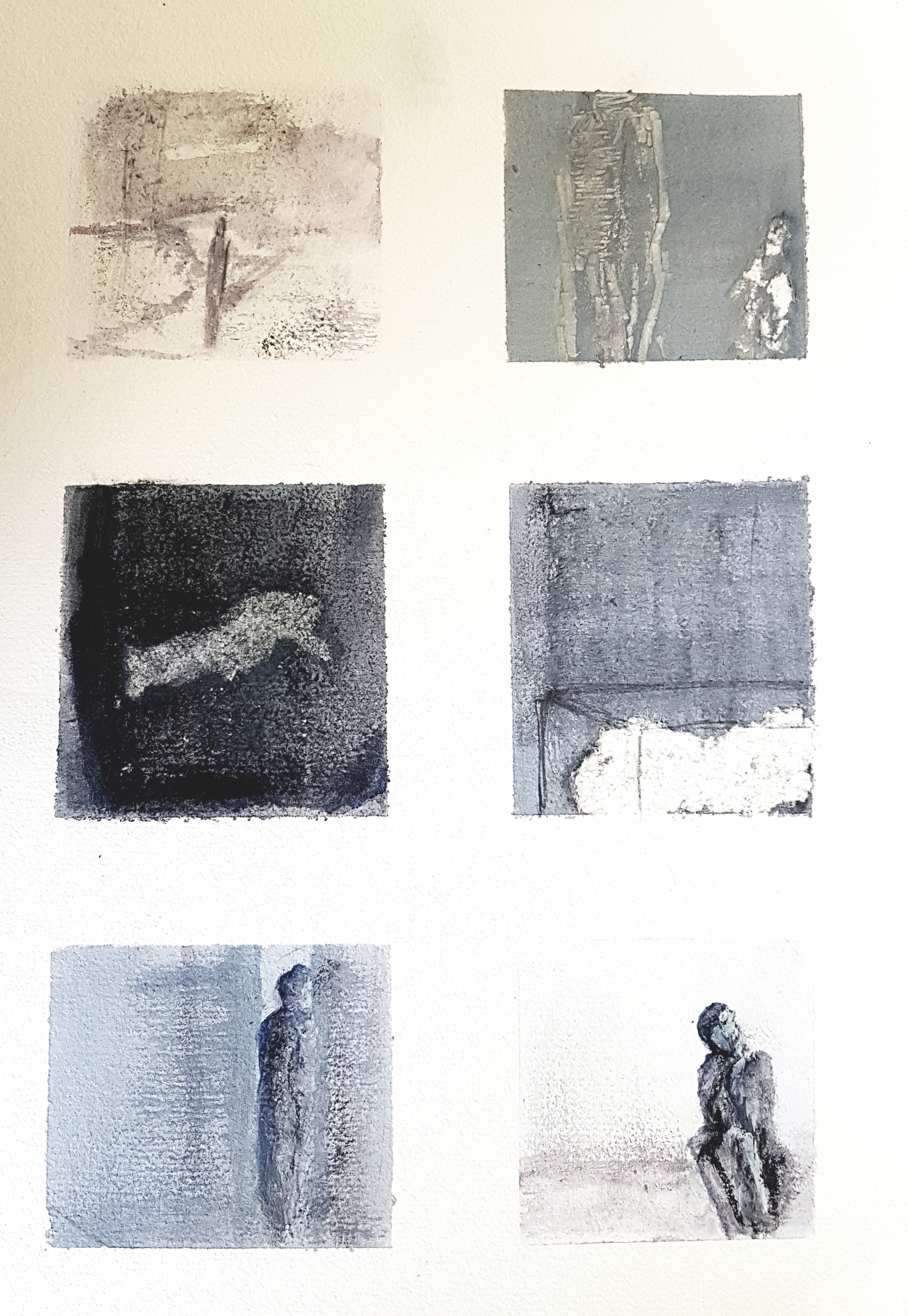Deirdre Buckley Cairns and Lesley Cox
Deirdre Buckley Cairns & Lesley Cox
 17 August to 22 September 2020
17 August to 22 September 2020
Caraig Bhréige
‘A rock of which no part is above water in any tide – but which is not far below the surface of the sea’
Darach O Séaghdha https://www.thejournal.ie/readme/irish-words-dinneen-dictionary-4283822-Oct2018/
Reflecting on this beautiful Irish phrase, the two artists will be researching the nature of fragmented social memory and perception of recalled events. Memory is vital to experience, as we get older we recall events and experiences to make sense of our lives and decisions. The older generation in our community and the insight they can give through their experiential memory are vital in our understanding of past and future actions. Using this rationale, we propose to engage with older members of the community to encourage them to share memories on past periods of social engagement as we share memories of ours. Their collaboration stems from a recognition of similar themes and time spent studying together on the BA in Visual Arts on Sherkin Island, 'We were delighted to have the opportunity to consider and challenge our own interrogation through the methodology of the other artist, to produce work by using different approaches and process.'
Lesley Cox and Deirdre Buckley Cairns completed an undergraduate degree in Visual Art with DIT, (Sherkin Island) in 2016 both achieving first class honours. In December 2017 they earned their Masters in Fine Art and Process in Crawford College of Art and Design.
The artists work to date has had complimentary themes including embodiment and memory. Deirdre Buckley Cairns uses film, sculpture and installation as a poetic means to explore concepts of memory and embodiment throughout her body of work. Deirdre has found that in times of pain or trauma people often choose to remain silent, holding and carrying the pain inside our bodies. This is stored in a veiled nature, quite often a secret to oneself. However, our bodies need to be heard, to release these secrets, but they do so in code, through body language, gestures and movement. This work explores the nature of this secret sign language as we communicate with others. Lesley Cox oil paintings focus on the subtle bodily gestures and postures associated with remembered events. Lesley’s practice is informed by the intangible, ephemeral quality of memory often using recalled personal narrative and interpretations of recounted memories to investigate transitional spaces. Cox’s work addresses a number of issues relative to the relational process between bodies, traces, texts and place. Material objects often act as a trigger, a reflexive site of personal and collective mnemonic return, framing memory as a process of internalisation.
Through collaboration we wish to intertwine different skillsets utilising the shared thematic of embodiment, gesture and memory. During this collaborative process between ourselves and in safe and managed collaboration with the wider community we wish to create work that will through a materialisation of these events and images synthesize the notion of a shared historical and social memory.
Deirdre and Lesley's thoughts on their residency:
As we near the end of our collaborative residency we have taken some time out to reflect on our research and direction over the last few weeks.
Caraig Bhreige is a beautiful phrase which means ‘a rock of which no part is above water in any tide – but which is not far below the surface of the sea’ this was the starting point and inspiration for our research into how social memory and how collective social memory is expressed through gesture/movement. We have spent this time researching the many different facets of social memory looking at subjects such as oral history, ritual and identity. As this is a huge subject, during our residency, we have concentrated our research in these subjects through the lens of gesture and also the artistic processes and materials we have used.
Processes that reveal and conceal such as layering, cyanotype printing, observation of gesture with layering techniques in painting and drawing and using different media such as transparent film have been used to research gestural trauma and historical social memory. Process that are unstable and unpredictable such as ink and charcoal dust have been useful in research into the unreliability of social memory and various types of crude printing has been used to suggest that oral history can weaken or change with every telling. Photographs have also played a part in our research, personal family photos have been manipulated and underexposed/overexposed, layered and drawn with scalpels. the processes used in this research have resulted in faded, obscured and indeed graphic images depending on the treatment and what visual representation was sought.
As a result of our research, an area of interest that has surfaced is oral tradition in relation to generational social history. We have been researching a link between the oral history of the famine and its effect on irish psyche with particular interest in its influence on the social psyche surrounding the 1916 Rising and subsequent independence. Social memory of trauma will continue to be researched under this lens. We are investigation the use of sawdust in a performative way and with installation and film.
Uillinn: West Cork Arts Centre's Artist Residency Programme is supported by the Arts Council and Cork County Council.



